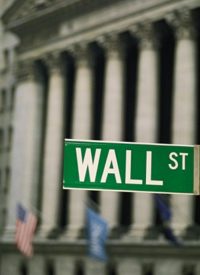
Economists at the Conference Board were guardedly optimistic. Ataman Oxyildirim said, “The October rebound of the LEI largely due to the sharp pickup in housing permits suggests that the risk of an economic downturn has receded.” Added Ken Goldstein, “The LEI is pointing to continued growth this winter, possibly even gaining a little momentum by spring. The lack of confidence has been the biggest obstacle in generating forward momentum, domestically or globally. As long as it lasts, there is a glimmer of hope.”
All three of the indices tracked by the Conference Board — Leading, Coincident and Lagging — were up in October. In August the LEI was at 116.2; it is now at 117.4, an improvement of one percent. The Coincident index was at 103.3 in August and now measures 103.5, a barely measurable increase of two-hundredths of one percent, while the Lagging index also showed modest improvement, moving from 110.1 in August to 110.9 in October, a gain of an equally almost imperceptible seven-hundredths of one percent.
The details of the ten components making up the Conference Board’s LEI can be seen here, but suffice to say, the surprise increase in building permits is clearly the single bright spot among the 10.
Some signs of life are showing up elsewhere. The Commerce Department said that retail sales grew for the fifth month in a row, gaining 0.5 percent in October after rising more than 1 percent in September. Factory output in New York state (an unusually accurate predictor of output nationally) grew in November for the first time since last May, but that was offset by a decrease in new orders. Overall economic growth in the final quarter of the year is running at nearly 3 percent, says JPMorgan, up from 2.5 percent last quarter and nearly stagnant growth in the first six months of the year. Inflation concerns were also muted by the Producer Price Index (PPI) declining in October, the first time in four months.
Looking ahead to the Christmas season, Karen Hoguet, chief financial officer for Macy’s, the second-largest department store chain in the county, was almost giddy in her outlook: “We feel confident that the momentum we have heading into the fourth quarter, combined with our holiday strategies, bode well for that quarter. We’ll have a spectacular Christmas.”
Because consumers have been spending at a higher pace than anticipated, business inventories have fallen to near record lows, approaching just 1.24 months’ supply as of November 15. Continued spending would require inventory rebuilding, which would add to the economy’s perceived luster.
The skeptics point out, however, that even modest enthusiasm must be tempered with sizeable doses of reality. Wal-Mart’s latest study of its consumers’ outlook shows them to be greatly worried about the economy, with just one mother out of 10 viewing the economy as “good.” And those worries are translating over into concerns about the costs of holiday meals, company officials said.
And that pickup in consumer spending? It’s being funded largely by decreases in savings, which have fallen from 6 percent at the bottom of the current recession to just 3.6 percent now. Part of the spending is a reflection of the nearly $35 billion a year that consumers aren’t spending for gasoline now that a gallon of gas has fallen from near $4 to an average of $3.45. And consumer spending isn’t likely to continue at that level according to Rick Newman, writing in USNews.com, that real after-tax and after-inflation incomes have been stagnant for years. And those consumers are likely to take a hit after the first of the year when the Christmas bills come due on their credit cards and their withholding tax breaks expire. Bernard Baumohl of the Economic Outlook Group warned: “We worry about the first months of 2012, when the bills finally come due. The current pace of consumer spending is unsustainable once we get past 2011.”
The jump in housing permits has to be tempered with the overhang remaining of homes being foreclosed. Merrill Lynch estimates that fewer than half of the 15 million homes in foreclosure have yet to come to market, and when they do, prices will fall at least another 8 percent. That will push even more homes under water, putting additional pressure on homeowners to justify making house payments on loans than exceed the market value of their homes.
The good news that unemployment claims are dropping ever so slowly is little cause for joy, according to Newman. One reason is that many of those out of work have also used up their unemployment benefits, and another is that companies are suffering from such uncertainty about the future that they are putting off hiring in substantial numbers.
There is plenty to be uncertain about: There's the increasingly likely prospect of a full-on recession growing in Europe; the chances of another debt downgrade if the Supercommittee comes up empty (which would likely increase the cost of borrowing for not only the U.S. Treasury but for states and municipalities as well); the price of oil (which recently increased from $75 a barrel in early October to over $100 currently); and the possibility of an explosion in Iran.
What is known is that the great recession is far from over. In fact, over the long term the economy can only get worse if the federal government continues to try to fight the recession via more spending and debt.



